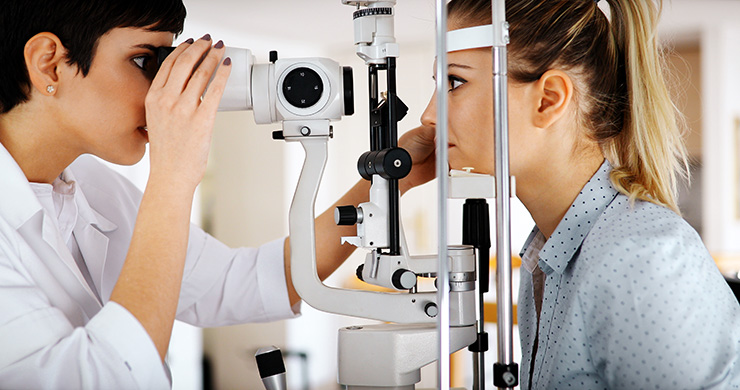How an Eye Doctor Can Help Avoid Vision Complications in Chino
How an Eye Doctor Can Help Avoid Vision Complications in Chino
Blog Article
Discovering the most recent Technological Innovations in Optometry and What They Mean for Optometrists
In the ever-evolving area of optometry, recent technological developments are reshaping just how professionals come close to eye care. From the accuracy of Optical Comprehensibility Tomography to the nuanced understandings used by AI-driven analysis tools, these developments are establishing brand-new criteria in patient analysis and therapy. Teleoptometry is positioned to redefine access, guaranteeing that proficiency transcends geographical constraints. As these advancements permeate the technique, eye doctors are confronted with the obstacle of welcoming these devices to boost person outcomes. The inquiry continues to be: how will these technical changes redefine the functions and responsibilities within the profession?
Developments in Diagnostic Devices
Advancing the area of optometry, developments in analysis devices have actually reinvented the means eye care specialists analyze and detect aesthetic impairments and ocular conditions. The previous decade has actually observed substantial technological advancements, enabling even more detailed and accurate evaluations. Optical Comprehensibility Tomography (OCT), as an example, supplies high-resolution cross-sectional photos of the retina, allowing for the very early detection of diseases such as glaucoma and age-related macular degeneration. This non-invasive imaging strategy has become important in contemporary optometric technique.
An additional key development is the intro of advanced corneal topography systems, which map the surface curvature of the cornea with accuracy. These devices are especially helpful for suitable contact lenses and detecting corneal problems. Furthermore, electronic retinal imaging has actually changed standard ophthalmoscopy, providing thorough, breathtaking views of the retina that promote detailed visual evaluations.
The advancement of wavefront aberrometry has additionally been crucial, making it possible for the analysis of refractive mistakes with unrivaled precision (Opticore Optometry). This technology helps in personalizing corrective lenses and boosting surgical end results for refractive surgical procedures. Jointly, these analysis improvements empower optometrists to supply exceptional individual care, guaranteeing early treatment and tailored treatment techniques, eventually boosting visual wellness outcomes
AI in Patient Monitoring
Building on the structure of cutting-edge diagnostic devices, the consolidation of expert system (AI) in person monitoring stands for a transformative jump for optometry. AI systems are significantly employed to improve effectiveness, accuracy, and personalization in patient care. By assessing substantial amounts of data, AI can recognize patterns and predict potential ocular problems, enabling eye doctors to tailor interventions better. This capacity is important in handling persistent eye conditions such as glaucoma and diabetic person retinopathy, where very early discovery and constant tracking are essential.
In addition, AI-driven systems facilitate streamlined patient communications and management processes. Automated scheduling, digital consultations, and customized follow-up strategies not just boost individual contentment however likewise optimize time administration for specialists. These systems can triage clients based upon the urgency of their problems, ensuring that those in important need get punctual attention.
Additionally, AI boosts decision-making by giving optometrists with evidence-based recommendations and therapy pathways. By integrating information from electronic health records, AI tools provide insights that inform clinical choices, minimizing the risk of mistakes and boosting individual results. As AI remains to advance, its function in person administration will likely broaden, reshaping the landscape of optometric treatment.
Breakthroughs in Retinal Imaging
In the world of optometry, retinal imaging has seen amazing technical advancements that are enhancing analysis capacities and patient care. Innovations such as Optical Comprehensibility Tomography (OCT) and fundus photography have revolutionized exactly how optometrists evaluate the retina and envision. OCT, particularly, provides high-resolution, cross-sectional pictures of the retina, enabling for the comprehensive assessment of its layers. This capacity is very useful for early detection and management of problems like glaucoma, diabetic person retinopathy, and age-related macular deterioration.
Boosted imaging techniques like OCT angiography are additional refining diagnostic precision. Opticore Optometry. Such improvements assist in the identification of minute retinal modifications that might indicate illness development.
In addition, innovations in man-made knowledge are boosting retinal imaging by allowing computerized analysis of large datasets. These systems help optometrists in recognizing patterns a measure of pathology, thus improving diagnostic precision and performance. Jointly, these developments are changing retinal imaging into a foundation of modern-day eye care, boosting end results and broadening healing opportunities.
Teleoptometry's Expanding Function
Teleoptometry is increasingly coming to be an essential component of eye care, driven by innovations in digital communication and diagnostic devices. This is specifically valuable in underserved and rural locations where access to specialized eye treatment is usually limited.
The assimilation of fabricated knowledge (AI) additional boosts teleoptometry, enabling the analysis of visual data and aiding in the detection of eye conditions such as glaucoma and diabetic person retinopathy. AI-powered formulas can quickly translate complex imaging information, giving optometrists with beneficial insights that bolster scientific decision-making.
Moreover, teleoptometry supports connection of care via seamless combination with electronic health and wellness documents hop over to these guys (EHRs), allowing eye doctors to keep comprehensive person histories. When seeking advice from with different professionals., this makes certain that people get constant and personalized treatment even.
Regardless of these benefits, obstacles remain, consisting of making certain data safety and security and taking care of client assumptions. Teleoptometry stands for a significant stride towards even more accessible, reliable, and patient-centered eye care. As innovation evolves, its duty is positioned to expand further.

Future Patterns in Eye Care
A myriad of ingenious fads is readied to reshape the future of eye care, driven by technical advancements and the evolving demands of clients. One substantial trend is the assimilation of artificial knowledge (AI) in diagnostics, which assures to enhance the accuracy and effectiveness of eye assessments. AI algorithms can examine vast quantities of data from retinal images, potentially identifying problems like diabetic person retinopathy and glaucoma earlier than conventional methods.
In addition, individualized medicine is obtaining grip in optometry, with genetic screening educating personalized Continue therapy plans. This method aims to enhance client results by tailoring treatments to private genetic profiles. Wearable innovation, such as smart get in touch with lenses, is also imminent, using real-time monitoring of intraocular stress or glucose levels, thus supplying continuous understandings into systemic and ocular wellness.
The adoption of increased fact (AR) and online fact (VR) in training and person education and learning is an additional emerging fad. These innovations provide immersive experiences that can enhance understanding and abilities both for patients and optometrists. As these patterns evolve, optometrists have to remain abreast of technological improvements to offer advanced treatment, guaranteeing better patient results and satisfaction in the dynamic landscape of eye treatment.
Conclusion

Jointly, these diagnostic advancements encourage eye doctors to deliver superior person treatment, guaranteeing very early treatment and tailored treatment approaches, ultimately boosting aesthetic wellness end results.

As these modern technologies proceed to develop, eye doctors have to adapt and integrate them right into technique, ultimately enhancing operations performance and elevating the requirement of eye treatment supplied to people.
Report this page